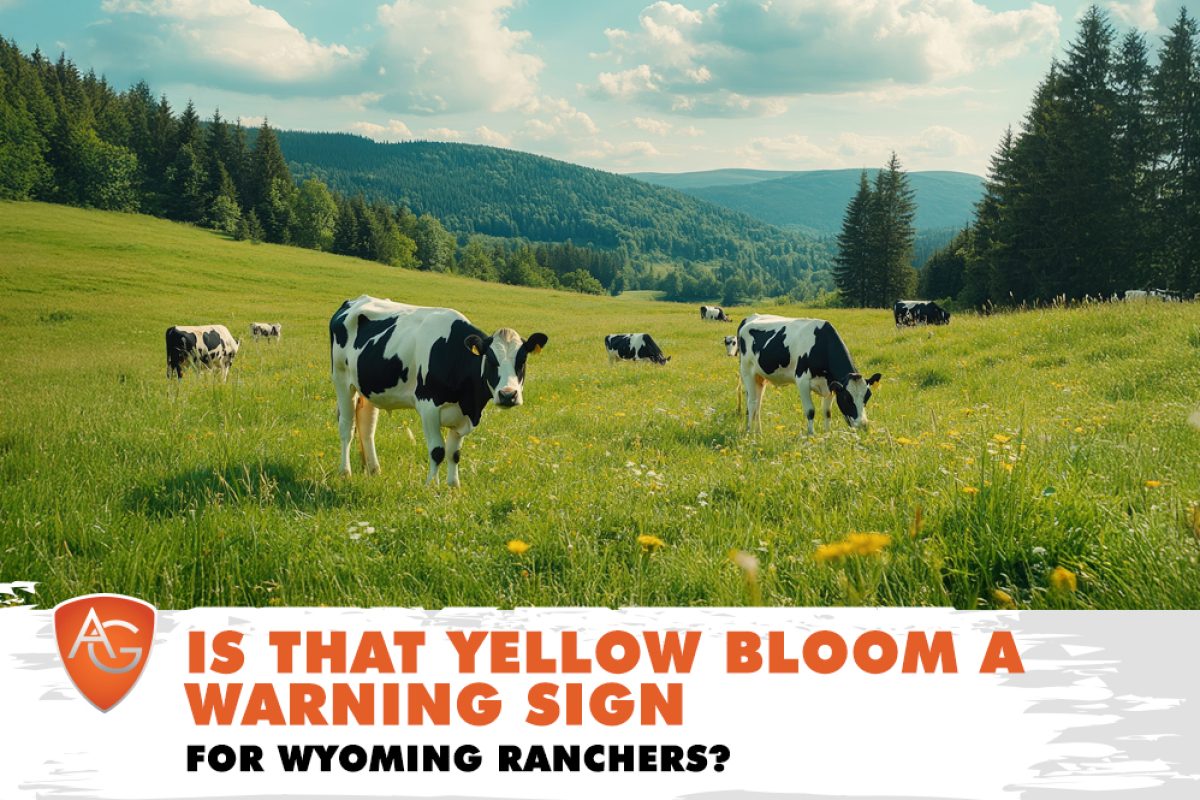Overview: Wyoming ranchers — don’t ignore that bright yellow bloom in your pasture. Learn what it means for your forage quality, grazing plan, and long-term livestock gains. Read on!
In late summer, when the Wyoming winds calm just enough for a quiet walk through the pasture, it’s hard not to notice the pop of yellow showing up across the landscape. At first glance, it might seem like just another hardy wildflower weathering the season. But for experienced ranchers in Laramie County, that yellow bloom might signal a bigger issue — one that can hurt your grazing, reduce forage quality, and throw off next season’s rotation.
So, what exactly is that yellow plant? And should you be concerned?
Spotting the Bloom: What Is It?
Most often, that yellow bloom comes from weeds like Curlycup Gumweed, Yellow Toadflax, or even certain Senecio species, depending on your land’s history and grazing patterns. While some look harmless, even pretty, they can indicate overgrazed pastures, depleted native grasses, or creeping weed invasions. In some cases, like with Tansy Ragwort or certain varieties of Senecio, these yellow plants can even be toxic to livestock.
Also Read >> What Makes Dalmatian Toadflax So Dangerous & What to Do About It
What That Yellow Tells You About Your Land
Ranchers know that pastures speak — if you know how to listen. And when yellow invaders start to dominate late summer landscapes, they’re often telling you this:
-
Your desirable grass is thinning out.
-
Nutrient balance might be off.
-
Livestock pressure is too high or too early in the season.
-
You may have an encroaching weed problem that needs immediate attention.
Yellow weeds tend to fill the gaps where perennial grass should be, especially when cool-season grasses are stressed or have been grazed too short. When that happens, you’re not just losing aesthetics — you’re losing tonnage, nutrition, and grazing days.
Are These Weeds Harmful to Livestock?
Some are just indicators, but others can be downright dangerous. Here are a few to keep an eye on:
Tansy Ragwort (Senecio): Can cause liver damage in cattle and horses.
Yellow Toadflax: Competes aggressively with native forage, and livestock typically avoid it.
Curlycup Gumweed: Generally avoided by cattle but spreads easily in disturbed soils.
Cow health can take a hit when pastures get overtaken, either from ingesting toxic weeds or from not getting enough quality forage.
>> Related Reading: How to Protect Livestock Losses from Toxic Larkspur
What You Can Do About It
If yellow blooms are taking over, you’ve got a few solid steps you can take before it gets worse:
1. Get a Proper ID : Take a few samples to your local ag extension office or snap photos and compare them with reliable weed ID guides. Not all yellow flowers are bad, but some are a serious warning.
2. Assess Your Grazing Pressure : If cattle are returning too early or staying too long, you may be unintentionally opening the door for these weeds. Consider rotating more aggressively or splitting pastures to ease pressure.
3. Reseed and Restore : In heavily affected areas, reseeding with Wyoming-native grasses like Garrison, Western Wheatgrass, or Brome blends can help restore balance. These grass hold up well to grazing and compete with invaders.
4. Spot Treat Problem Areas : Herbicide isn’t always the first answer, but for persistent or toxic species, well-timed spot treatments can prevent a larger takeover without harming surrounding forage.
Bottom Line: Don’t Ignore the Yellow
Yellow blooms might look harmless, but they often show up when something is out of balance. Whether it’s pressure on your grasses, nutrient loss, or a deeper weed issue, it’s worth investigating before it turns into a lost grazing season.
At All Around Ag, we don’t just supply premium hay — we stay boots-on-the-ground with our customers. If your pastures are looking off or you’re battling low forage and questionable weeds, give us a call. We’ll help you read the land — and get ahead of the problem.
